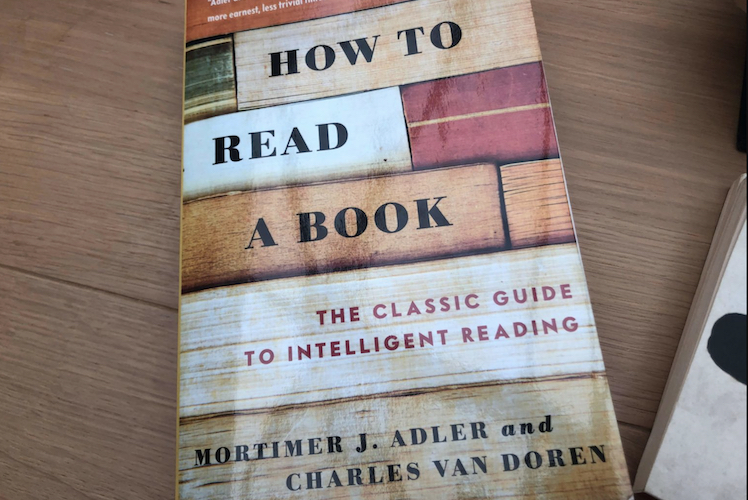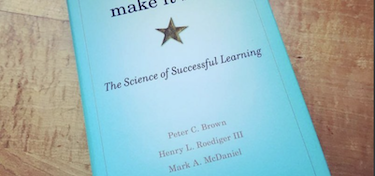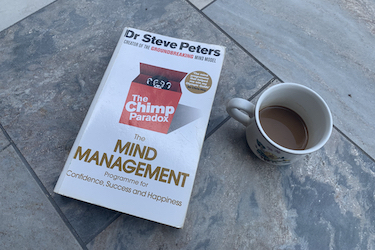As children, we learn to match symbols to sounds and then how to manipulate those sounds into words. Confidence in reading is taught through trial and error - you read snippets, excerpts, and books to master the English language. However, there's very little focus on how to read - how to adapt your reading style to match the reading medium and how to truly absorb the information in front of you. Essentially, we learn that reading is scanning your eyes over a text and translating symbols into tightly defined concepts in your brain. We learn that there's no right way to read and that the way we read is static - we don't change how we read based on what we read.
It's hard to pinpoint precisely what impact this learning style has on our reading comprehension and enjoyment as we reach adulthood, but if reading statistics are anything to go by, the picture doesn't look too good. According to a 2019 study by Kantar Insights, while an impressive 51% of UK adults read one book in the past year, only 34% managed to read more than 10. A 2015 study found that Americans read an average of 12 books a year. While that number sounds impressive at first glance, it's not strictly accurate. The most voracious readers (the stereotypical bookworms) inflate the numbers significantly. Furthermore, the percentage of the adult population in the US who read any books has declined 7% in the last decade.
Perhaps the biggest reason we struggle to pick up books is that we don't know how to get the most out of what we read. That's exactly what How to Read a Book by Charles Van Doren, and Mortimer J. Alder aims to address.
Summary of Lessons in How to Read a Book
Active Reading
There are several reasons to read a book. You can read for entertainment, to absorb information (facts), or for understanding (developing a deeper insight). Reading for understanding is the most challenging type of reading and is the primary focus of the book. When you read to understand, you're not just absorbing the information, but also thinking critically.
We often think of reading as a passive activity, but you get much more from the reading experience if you treat it as an active two-way exchange. We think of reading as passive because the book has already been written - it exists as a final and complete work. This tricks us into believing we can't have a conversation with the author as we read, but in reality, that is precisely how you deepen your understanding. You can read more actively by asking questions like "What is the purpose of this book or chapter?", "what does the author want me to believe?", "Are these statements true?". You can also develop your active reading skills by making the book your own rather than treating it as an ornament. This means highlighting and underlining statements that stand out to you and writing in the margins.
The Different Levels of Reading
The book breaks down the four different levels of reading: elementary, inspectional, analytical, and synoptic.
Elementary Reading
The reading level you achieve in elementary schools. Most people can read at this level.
Inspectional Reading
Getting the most from the book in a short time. There are two types of inspectional reading, systematic and superficial. Systematic reading is a quick skim of the book, for example, reading the table of contents, checking the index, or reading a few chapters. Systematic reading can give you the gist of the book and let you know whether it's worth your time. Superficial reading is when you read passively. If you hit something you don't understand, you don't worry about it and just move on.
Analytical Reading
Analytical reading is deep and thorough reading and takes more of your time. It requires you to ask questions to understand what's being communicated on the page. An excellent way to test whether you're an analytical reader is to try and summarise the contents of a book or chapter with the utmost brevity. If you can take the arguments in the book and use them to create new arguments with the same meaning and structure, that's also a sign you understand the material on a deeper level.
Synoptic Reading
Synoptic reading is about exploring the subject further by reading widely. To put it another way, synoptic reading takes you beyond the book and into the subject. By reading one book on the subject, you get a good grip on language, concepts, and educational "landmarks", and you can use this knowledge to explore increasingly nuanced or complex works in the subject.
Reading With Purpose
One of the overarching lessons of the book is how to read with purpose. How many books have you read that you would struggle to summarise to someone else? Or how many times have you thought you understood the concepts in a book, but when questioned, you found that your understanding fell apart? The book teaches you how to approach reading more deliberately. If you lack a more in-depth understanding, it's because you were doing inspectional reading. There's nothing wrong with inspectional reading if that's the way you intended to read.
Finding Out What the Book Is About
'Finding out what the book is about' might seem like a strange lesson. After all, don't you know what the book is about when you buy it? Most people will scan the blurb or read some reviews and come away believing they know what they are about to read.
However, there's much more to this process than appears at first glance. If you want to be a deliberate and thoughtful reader, you need to approach your understanding of the book the same way. This lesson is about classifying the book according to its 'kind' and subject matter - also referred to as pigeonholing.
First, you determine the subject and classification of the book. For example, is it a play or poem? Does it delve into history? Is it a science book? Or is it a work of philosophy? These questions are often intuitive and easy to answer, leading many people to believe there's no need to ask them at all. However, there is value in cementing the answers to these questions in your mind. We typically have a framework for what to expect from a poem, play, or science book. If you read the book with a clear idea of what type of book it is, you can begin to think analytically from the first page. For example, you can challenge whether a history book is well-sourced enough if you read the book while applying your rules and expectations for history books.
Secondly, you need to determine what 'kind' of book it is. Is it practical or theoretical? Practical books teach or tell you how to do something. Many self-help and business books fall into this category. Some examples include Dale Carnegie's How to Win Friends and Influence People, Stephen R. Covey's The 7 Habits of Highly Effective People, and Tim Ferriss's The 4-Hour Workweek. These books may include some narrative elements, but only when they help you connect the advice to real-world examples. They want you to understand how to apply the rules to your life, so you can reap the same benefits.
Theoretical books take a different approach. These types of books report facts, offer arguments or insights, or take a position. Examples of theoretical books include Stephen Hawking's A Brief History of Time or Sapiens by Yuval Noah Harari. Theoretical books don't have to be opinionated (take a position), but they can be. For example, academic textbooks would also fall into the category of theoretical books.
To deepen your understanding of what the book is about, you should do these three things:
- Succinctly state what the book is about. What are the major themes? What's the point of the book? If your explanation goes on for more than a few sentences, you should start again.
- Outline the book. What's the basic structure of the book? For example, in How to Win Friends and Influence People, Dale Cargenie starts by covering the fundamentals of handling people, then moves on to how you can become more likeable. In the later chapters, he tells you how to leverage your influence and win people around to your way of thinking.
- Define the problem the author has tried to solve. If you can get to grips with why the book was written - the primary motivator - you can assess how good the solution was. Did the book succeed or fail at solving the problem?
This summary is by no means exhaustive. How to Read a Book explores these concepts thoroughly, so you can improve your comprehension level.
Is the book still relevant today?
How to Read a Book was first published in 1940, and the heavily revised version co-authored by Charles Van Doren was published in 1972. This has left many people wondering whether the book is still relevant today.
We believe it is. In a world where reading is in decline, learning how to read effectively and efficiently has never been more critical.
Who Would Benefit From Reading This Book?
While everyone could benefit from reading How to Read a Book, it's particularly useful for non-fiction readers who want to dive deeply into a new topic. Becoming a "serious" reader can seem daunting to many people, to the point where they opt not to try at all. However, we are all capable of reading a wide range of books and getting more from them if we utilise the right toolset.













